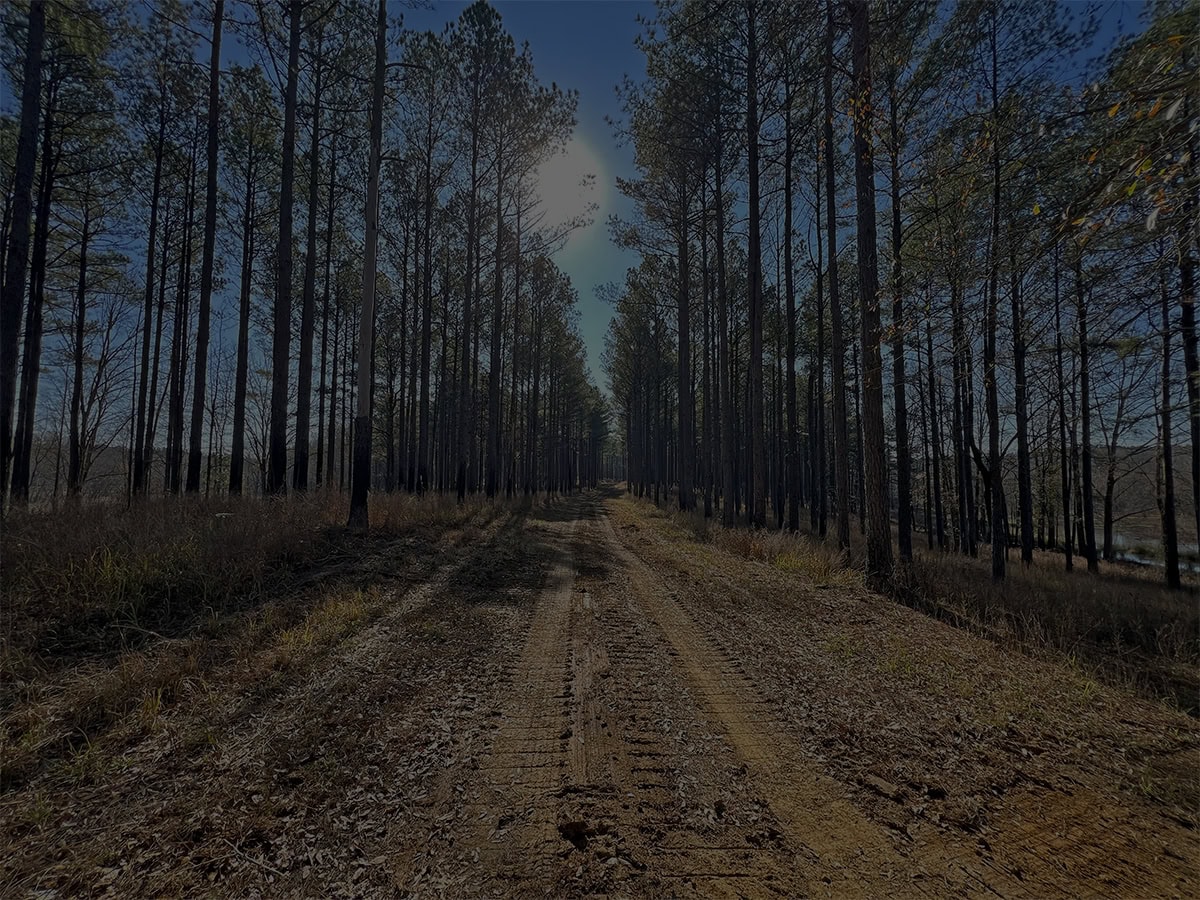
Managing Invasive Plants on Your Land: Identifying and Controlling Sericea Lespedeza & Japanese Stiltgrass
CHIPPER GIBBES | PRINCIPAL BROKER
VIDEO SUMMARY
Understanding the Threat of Invasive Plants
Invasive plants are one of the most overlooked challenges in land and wildlife management. They may seem harmless at first glance, but these aggressive species quickly spread, choking out native vegetation and reducing the quality of wildlife habitat. The more time you spend on your property, the more you begin to notice them—and the more important it becomes to take action.
Two of the most common and troublesome invasive species across the Southeast are Sericea lespedeza and Japanese stiltgrass (Japan grass). Both are hardy, fast-spreading plants that thrive in disturbed or shaded areas, making them difficult to manage without the right approach.
How to Identify Sericea Lespedeza
Sericea lespedeza is a perennial legume that often invades open fields, fire lanes, and pastures. It forms dense stands that crowd out beneficial forbs and grasses—plants that deer, turkey, and other wildlife depend on for food and cover.
If you spot Sericea lespedeza on your property, don’t ignore it. Early detection and control are critical to prevent it from spreading. Fortunately, Roundup (glyphosate) can easily kill it when applied correctly. Spot-spraying smaller patches or using a calibrated spray rig for larger infestations can help keep it under control.
Managing Japanese Stiltgrass (Japan Grass)
Another common invader, Japanese stiltgrass, prefers shady, moist areas—especially along roads, firebreaks, and woodland edges. While it may look like a harmless ground cover, it provides no real wildlife benefit and can form thick mats that smother native plants.
To control it, you can use Roundup for broad applications or Clethodim, a grass-specific herbicide, if you want to avoid harming desirable vegetation nearby. For longer-term control, Plateau (Imazapic) offers residual soil activity that helps prevent regrowth and seed germination.
Effective Control Methods
Whether you’re treating a small patch with a backpack sprayer or managing several acres with a tractor-mounted spray rig, calibration and consistency are key. Always follow label directions, spray under favorable weather conditions, and monitor treated areas for re-emergence.
Land Management Tip:
If you don’t have good native plants growing, something undesirable will fill the gap. Managing invasive plants helps ensure your land supports healthy soils, native vegetation, and thriving wildlife.
Why Invasive Plant Control Matters
Ignoring invasive plants doesn’t just make your property look worse—it impacts soil health, biodiversity, and wildlife habitat quality. By controlling these species, you’re not only improving your land’s productivity but also contributing to better conservation practices across Mississippi and the Southeast.
Partner with SWAPA Land
At SWAPA Land, we help landowners manage and improve their properties by focusing on what matters most: Soil, Water, Air, Plants, and Animals. Whether you’re interested in improving wildlife habitat, restoring native vegetation, or buying and selling land, our team can help guide you every step of the way.
FULL TRANSCRIPT
Click To Expand Full Transcript
[00:00:00:00 - 00:00:26:57] Chipper Gibbes
All right. So invasive plants is another topic of discussion. A lot of people don't think about it very often, but I've gotten to where the invasive plants bother me more and more every year—because the more you learn about them, the more you see them everywhere. And that can be a problem. Walking around in this little block right here, I see sericea lespedeza.
[00:00:27:01 - 00:00:48:24] Chipper Gibbes
A lot of biologists talk about it all the time. This little fire lane right here has it coming up everywhere, and that's a bad one. If you see it on your place and you can kill it—spray it. Roundup kills it really easily. This is another one right here coming up fresh. This is Japan grass, or Japanese stilt grass.
[00:00:48:29 - 00:01:11:39] Chipper Gibbes
It likes to grow in shady, wet areas, and it really has no wildlife benefit. There's a whole mat of it right here. You can kill it with Roundup, and if it's growing around a bunch of other plants that you don't want to kill—if you don't want to nuke the entire area—you can use clethodim, which is a very common grass killer.
[00:01:11:39 - 00:01:36:51] Chipper Gibbes
It'll kill it well, and if you want a chemical that will provide a little bit of residual soil activity to keep Japan grass from coming back, you can spray Plateau on it. The chemical name is imazapic. It will kill the plant and also prevent Japan grass from coming up again for a while.
[00:01:36:51 - 00:01:55:17] Chipper Gibbes
So that's just two examples. We have several others, but I just saw these walking around here and thought I’d mention them. It's great if you have time and a backpack sprayer—you can treat a small area really fast. Or if you have a calibrated spray rig on your tractor, you can go in and broadcast spray if you need to.
[00:01:55:17 - 00:02:12:36] Chipper Gibbes
If it’s an area that has a lot of it, it’s something to pay attention to—because invasive plants thrive where we don’t have good plants growing. Your wildlife will certainly benefit from keeping those invasive species controlled.
RELATED VIDEOS
ROAD MANAGEMENT: Enhancing Soil Health and Wildlife Habitats
CHIPPER GIBBES | PRINCIPAL BROKER
MS, LA, AL, IA, CO, AR